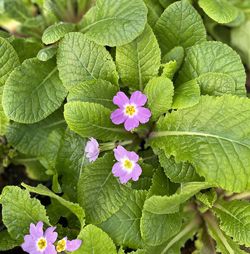Erica
Heath
Heaths have fine, short, needle-like evergreen leaves that vary from deep green to silver, gold, or chartreuse. Tiny urn-shaped flowers sparkle like hoarfrost in shades from white to pink and rosy purple. Though most floriferous in winter and early spring, (and highly welcome at that dreary time!), a scheme for year-round color can be developed by combining Ericas with Callunas.
A beacon of dazzling color, the low-to-the-ground mat is cloaked in distinctive needlelike foliage set aglow with gilded yellow hues and bronzy red tips. Resulting as a sport from ‘Vivellii’ and named by J. W. Sparkes in 1955 for his sister-in-law, this lambent beauty is further heightened when her carmine-red racemes unfurl, cheering up a drab winter landscape.
Blooms February – March
Size: 6" – 9" high x 12" – 15" wide.
Hardy to zone 4.
Please fill out our Registration Form to receive news of updates to the web site, availability of new plants, give us your feedback, and to be on the mailing list to receive future printed catalogs.
Other selections in this genus:
- Erica carnea ‘Golden Starlet’
- Erica carnea ‘King George’
- Erica carnea ‘Myretoun Ruby’
- Erica carnea ‘Pink Spangles’
- Erica carnea ‘Schneekuppe’
- Erica carnea ‘Springwood Pink’
- Erica carnea ‘Springwood White’
- Erica carnea ‘Vivelli’
- Erica cinerea ‘C. D. Eason’
- Erica cinerea ‘Purple Beauty’
- Erica x darleyensis ‘Furzey’
- Erica x darleyensis ‘Kramerís Red’
- Erica x darleyensis ‘Margaret Porter’
- Erica x darleyensis ‘Mary Helen’
- Erica erigena f. aureifolia ‘Golden Lady’
- Erica erigena ‘W. T. Rackliff’
- Erica vagans ‘Mrs. D. F. Maxwell’











